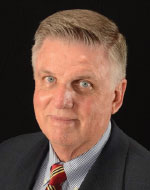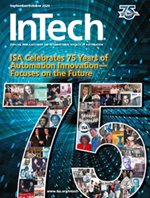
2007: Workforce development, standards compliance, and more
I entered my year as president with some very definite plans to implement without realizing that a president’s turn in the barrel is not very long. As president-elect secretary under president Ken Baker, I pursued the idea of creating some form of vehicle for users to assure compliance to ISA standards. With a large amount of help from Ed Marszal (ISA-84 proponent and president of Kenexis) over dinner after a day at Control Expo–Mexico in summer of 2006, we developed a proposal for acceptance by the executive committee. It was heavily aimed toward ISA-84, which was thought to be low-hanging fruit at the time.
Though circumstances changed the initial implementation plan from safety to security, the ISA Automation Standards Compliance Institute (ASCI) began life on my watch as a vehicle using industry institute members to see to compliance of ISA standards. Under ASCI, this began with the ISA Security Compliance Institute, constructed the same way, and later the ISA Wireless Compliance Institute (WCI).
My primary plan during 2007 was to create a driven workforce-development program, a plan to engage members for promotion and advancement of the profession of automation. Planting the flag for our profession with an external focus was the goal by engaging industry, academia, and government as a call to action. In 2004, we had created our own ISA Certification for Automation Professionals (CAP), which provided a lot of definition as to the perceived scope of industrial and process automation as ISA would see it. The book, A Guide to the Automation Body of Knowledge, edited by the late Vernon Trevathan, served to guide readers toward CAP. Many of the plans and activities were driven by CAP as a cornerstone to build upon, which included certifying practitioners from other countries or those who were working in global companies.
Beyond this aggressive plan, I was also invested in making the Society more global in stature. Trips to Mexico, Brazil, Russia, China, and Singapore were all about recognizing both automation as a career path with a growing shortage of practitioners, and ISA—by applying our core competencies—as a source of training, certifications, standards, etc. in concert with the expertise of our many active members.
In 2007, I was also chairman of the Automation Federation, founded the year before to be an umbrella organization to attract other organizations either dedicated to or with interest in some facet of automation. Much of ISA’s workforce activity and advocacy was taken up by the Automation Federation in the following years. This led to numerous successes, including our development of the Automation Competency Model in partnership with the U.S. Department of Labor in 2008 and critically reviewed and reissued in 2011, 2014, and 2018. I still believe the external focus is critical for our Society to trumpet the great things ISA volunteers do for industry, our profession, and life in general.

Membership organizations are only as good as the volunteers willing to dedicate some part of themselves for the greater good.
Steve Huffman, 2007 Society President, ISA Fellow



